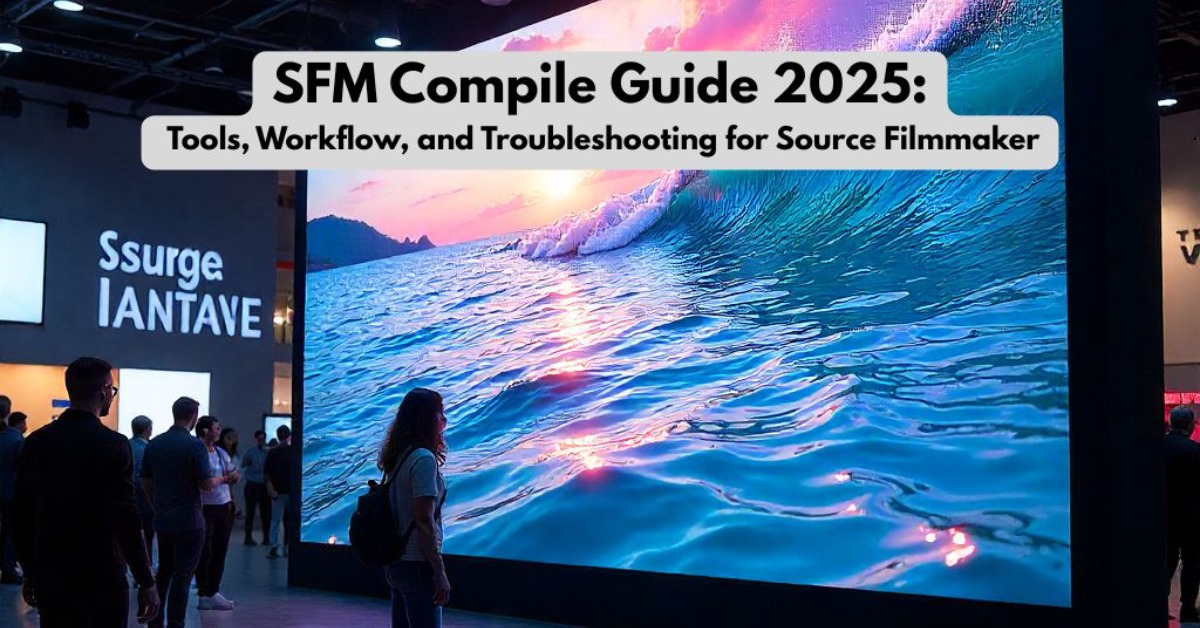Introduction
Source Filmmaker (SFM) is one of the most popular animation tools developed by Valve. It allows creators to build cinematic animations using assets from the Source Engine. To use custom content like models, textures, maps, and animations in SFM, you need to go through a process called SFM Compile.
The compilation process converts raw assets into optimized formats that the Source Engine can understand. Without it, your animations may break, textures may not load, or models may appear deformed. Whether you’re building a Fortnite SFM Compile, a Tracer SFM Compile, or exploring creative projects like SFM Compile futa, SFM Compile creampie, or even joining an SFM Compile club, understanding this workflow is the foundation for success.
This guide covers tools, methods, and best practices so you can streamline your projects and avoid common mistakes.
What Is SFM Compile?
SFM Compile refers to the process of converting raw files (like OBJ, FBX, or PNG) into formats SFM supports. Here are the key ones:
- Models (MDL): Compiled from SMD files using Crowbar or studiomdl.
- Textures (VTF): Converted from PNG, JPG, or TGA with VTFEdit.
- Animations (SMD): Exported from Blender, Maya, or 3ds Max and compiled using QC scripts.
- Maps (BSP): Built in Hammer Editor, then compiled into the correct format for SFM.
Proper compilation ensures smoother rendering, fewer crashes, and better compatibility across projects.
Tools You’ll Need for SFM Compilation
- Crowbar – The go-to tool for compiling and decompiling models.
- studiomdl – Command-line tool for model compilation.
- VTFEdit – Converts standard image formats into VTF textures.
- Hammer Editor – Official map editor for Source Engine.
- Notepad++ – Useful for editing QC (QuakeC) scripts.
These tools are essential for anyone working with SFM Compile club projects or building large animation compilations like Fortnite SFM Compile sets.
Step-by-Step Model Compilation
1. Preparing the Model
- Clean topology in Blender, Maya, or 3ds Max.
- Assign textures properly.
- Export the model as an SMD file.
2. Creating the QC File
A QC script contains instructions for how SFM should handle your model:
$modelname “custom_model.mdl”
$cdmaterials “models/custom_model/”
$body studio “custom_model.smd”
$sequence idle “custom_model_idle.smd” fps 30
This tells the compiler where textures are stored and what animations to include.
3. Compiling with Crowbar
- Open Crowbar.
- Select the QC file.
- Hit Compile to generate the MDL file.
Now the model is ready to use in SFM Compile projects.
Texture and Material Compilation
Converting Textures
Use VTFEdit to convert PNG, JPG, or TGA into VTF.
Creating a VMT File
A VMT script links textures to models:
“VertexLitGeneric”
{ “$basetexture” “models/custom_model/texture”}
Save it in:
Steam\steamapps\common\SourceFilmmaker\game\usermod\materials\models\custom_model\
Compiling Animations
Preparing Animation Files
- Export animations as SMD files.
- Each animation (idle, run, walk) should be separate.
Updating the QC File
$sequence run “run.smd” fps 30
Compiling with studiomdl
Run studiomdl to embed animations into the MDL file.
Map Compilation
- Build the map in Hammer Editor.
- Compile into BSP format.
- Move the file into SFM’s maps directory.
This process is key for large projects like SFM Compile club collaborations.
Troubleshooting Common Issues
- Missing Textures: Check VMT paths and VTF conversion.
- Broken Animations: Ensure skeleton hierarchy matches QC references.
- Maps Not Loading: Check Hammer logs for missing assets.
- Model Errors: Recheck QC script for typos (like sfm complie mistakes).
Conclusion
SFM Compile is the backbone of custom content creation in Source Filmmaker. Whether you’re creating a simple Tracer SFM Compile, working on experimental projects like SFM Compile futa or SFM Compile creampie, or building full-scale cinematic works like a Fortnite SFM Compile, understanding how to properly compile assets saves you time and frustration.
With tools like Crowbar, VTFEdit, and Hammer Editor, you can turn raw assets into professional-quality animations. Once you master this process, your workflow becomes smoother, your projects more stable, and your creativity limitless.
FAQs About: SFM Compile
1. What is SFM Compile?
SFM Compile is the process of converting raw 3D assets like models, textures, and animations into formats supported by Source Filmmaker. This ensures smooth rendering and compatibility.
2. Which tools are best for SFM Compile?
The most common tools are Crowbar (for compiling models), studiomdl, VTFEdit (for textures), Hammer Editor (for maps), and Notepad++ for editing QC files.
3. Why is my SFM model not showing textures?
Usually, textures fail to load if the VMT file path is wrong or if the texture was not properly converted into VTF format. Double-check your file directories.
4. Can I use Blender models in SFM?
Yes. Export your model from Blender as an SMD file, create a QC script, and compile it into an MDL file using Crowbar or studiomdl.
5. What is the difference between SFM Compile and decompile?
Compile prepares assets for use in SFM, while decompile extracts existing models or assets back into editable formats.
6. Do I need to compile maps for SFM?
Yes. Custom maps must be created in Hammer Editor and compiled into BSP format before they can be loaded into Source Filmmaker.




